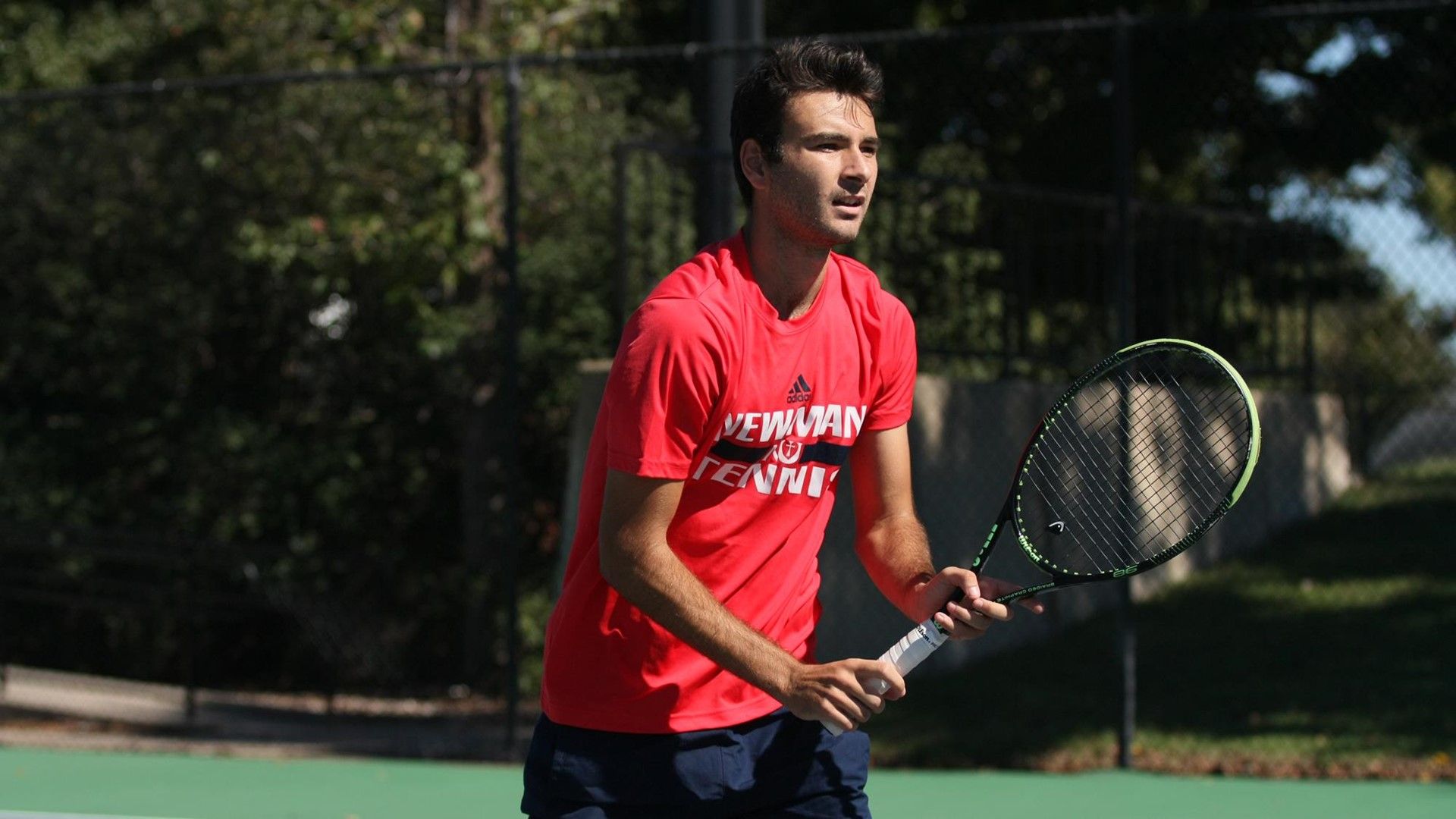By Emily Larkin, Managing and Online Editor
Many student-athletes who flooded the Town Hall meeting just after Thanksgiving to demand answers from administrators, including President Noreen Carrocci, about a planned reduction in athletic scholarships said they were encouraged by their coaches to attend.
And many of those coaches admit that they urged their athletes to attend the meeting, saying they were concerned about the future of their teams and their ability to recruit once a 4 percent overall reduction to athletic scholarships happens next year, followed by a 2 percent reduction the year after that.
“Our boss has been trying to talk to her, and we aren’t allowed to talk to her,” Shella Augspurger, Newman’s director of tennis, said of President Carrocci. “So we thought maybe she would listen to the players and the students because it’s a Town Hall meeting, so we said ‘Hey, this is your opportunity to go.’”
Some coaches agreed with Augspurger, saying they are scared for the future of their departments.
Augspurger said coaches urged their athletes to attend the meeting because of a sense of helplessness within the department. She said the reduction to athletic scholarships will directly affect the recruiting timeline that has already been established in most sports, as it is late in the recruiting season and most sports recruit a year out.
“Most coaches are recruiting juniors in high school. We have already solidified the seniors, but now we have to go back and tell them, ‘Well, we thought we were going to get you for this but now we can’t because our numbers have changed, so it doesn’t look good.”
Along with the reduction to the athletic department, other areas of the university have been affected as well. In an email to the student body sent on Nov. 28, Carrocci said that the Board of Trustees approved a 3.875 increase in tuition, room and board rates for the 2018- 2019 school year.
Graduate Assistant Tennis Coach and former Newman tennis player Eduardo De Santos said that he sat down with Trilli and “crunched the numbers” on how the reduction to the athletic department mixes into the new rate increases. De Santos said that these additional increases along with the reduction to the athletic department budget will lead to a great profit margin for the university and a great drop in funds for athletics.
Aaron Avila, women’s head soccer coach, said that the reduction in funding will cause coaches to be forced to make tough decisions on where the money they do have will go.
“Coaches can take two approaches to this, really. A coach could go ahead and cut current players, take money away from them and, therefore, have more money to spend with incoming players because the money has to come from somewhere,” he said. “Or coaches could leave current players at the same status and not have as much money to give out to incoming players.”
Auspurger said this causes many coaches, instead of being able to have reliable top picks for their No. 1 team spots, to have to rely on what would traditionally be a fourth or fifth-ranked player to put in that No. 1 spot. She said she believes this would naturally decrease the overall success of each program over time.
“With some sports, it may not affect them as much right away because it depends on who is graduating. So, this year, my one senior on the women’s side is a lower level player, so, though our funding is being cut a lot on that side, I only have one opening for a lower level player that I can get at a lower amount of money,” she said. “Next year, when my high-level players are graduating, that is when it will go into effect because I will not be able to get that level.”
Augspurger and Avila voiced concerns that this funding will hinder Newman’s successful transition into being an associate member of the Mid-America Intercollegiate Conference.
“It’s different because before we were in a league with other private schools, so the cost of tuition was very similar. It was more of a comparison, and even some of those schools had better facilities than we did,” Avila said. “Now, going into the new league, the comparison is not going to be as apples to apples. We are going to be with all state schools. Their facilities are going to better than ours. We’re not going to be able to compete with them financially or facilities- wise, so it’s going to be a tough task.”
Augspurger said that since Newman has fewer specialized facilities than other schools in the MIAA conference, scholarships are mainly what entice student-athletes to choose Newman over any other nearby school.
“Scholarships are the main things with programs. We don’t have facilities, but we are still regionally ranked,” she said. “We are probably one of the only schools that don’t have tennis courts, but we make it work because of scholarships. But if we don’t have those, it doesn’t matter.”
Trilli said he is still working through how the reduction will affect each sport individually and is looking into solutions to ensure that the least amount of change occurs during the conference transition.
“I’m in the process of trying to figure out who I need to talk to, what I’m going to do, who it’s going to affect and how it’s going to affect. I’m looking at years of paperwork back to 2010,” he said. “I am going to find a way to make this work. There are always ways to make things work, and I have learned that over the years.”
Trilli said that, though he is retiring next semester, he won’t give up on finding answers.
“‘If it is to be, it’s up to me.’ That’s my message.”
PHOTO: NEWMAN COACHES have recently voiced their concern over the recent reductions to the athletic department. Courtesy photo, Newman Athletics
